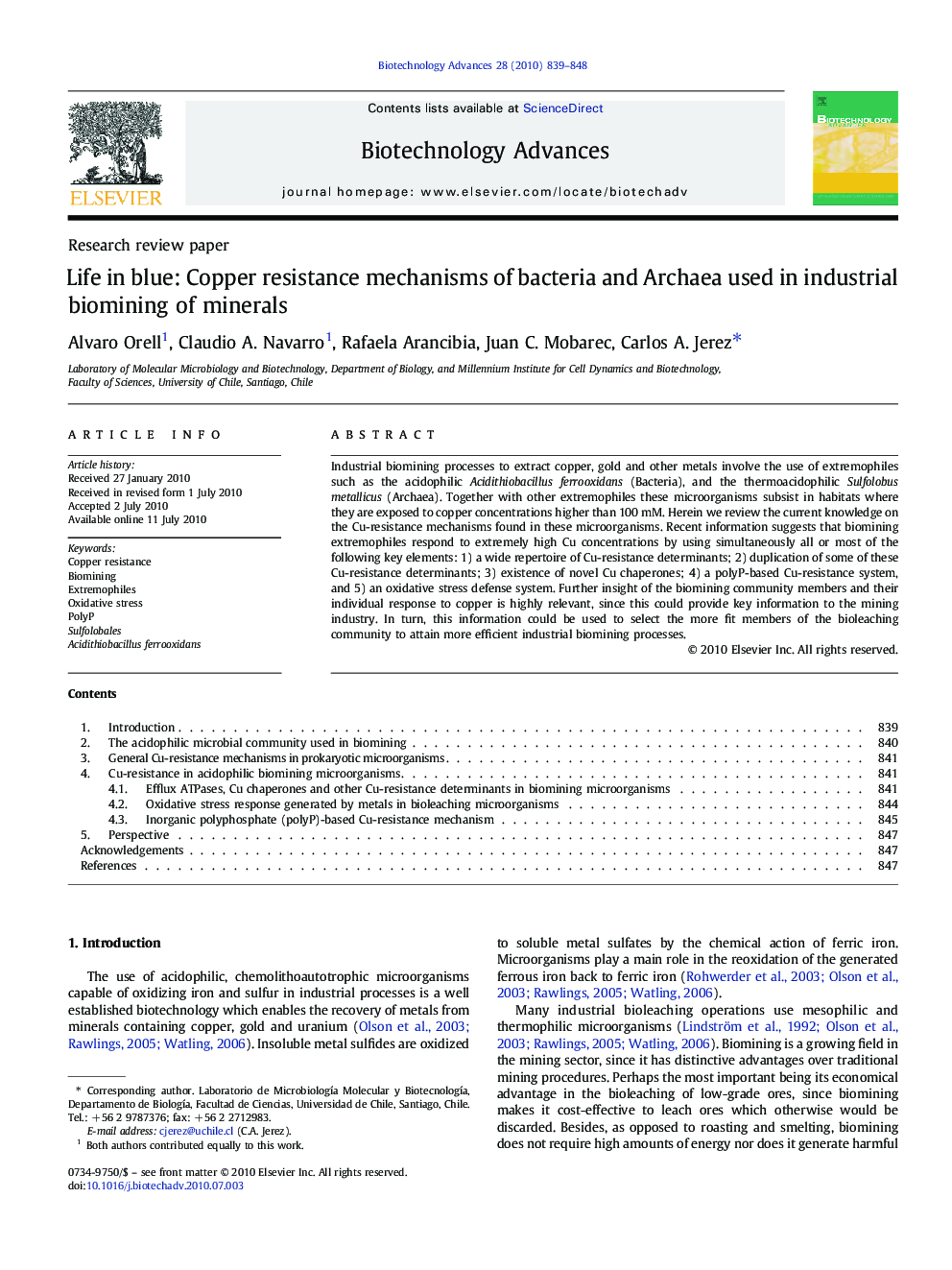| Article ID | Journal | Published Year | Pages | File Type |
|---|---|---|---|---|
| 14429 | Biotechnology Advances | 2010 | 10 Pages |
Industrial biomining processes to extract copper, gold and other metals involve the use of extremophiles such as the acidophilic Acidithiobacillus ferrooxidans (Bacteria), and the thermoacidophilic Sulfolobus metallicus (Archaea). Together with other extremophiles these microorganisms subsist in habitats where they are exposed to copper concentrations higher than 100 mM. Herein we review the current knowledge on the Cu-resistance mechanisms found in these microorganisms. Recent information suggests that biomining extremophiles respond to extremely high Cu concentrations by using simultaneously all or most of the following key elements: 1) a wide repertoire of Cu-resistance determinants; 2) duplication of some of these Cu-resistance determinants; 3) existence of novel Cu chaperones; 4) a polyP-based Cu-resistance system, and 5) an oxidative stress defense system. Further insight of the biomining community members and their individual response to copper is highly relevant, since this could provide key information to the mining industry. In turn, this information could be used to select the more fit members of the bioleaching community to attain more efficient industrial biomining processes.
